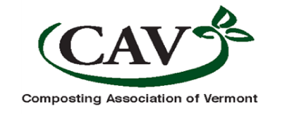Click here for TOOLKIT for Feeding Food Scraps to Laying Hens
Purchasing feed inputs is a significant cost to egg producers. According to industry data and academic literature, grain can represent as much as 70% of production costs and 30% of the retail price of an egg. Imported feed grain also adds embedded environmental costs, reducing the overall energy efficiency of locally produced eggs.
Local resources exist that may provide more economically and energy efficient feedstuffs. Among these, discarded food scraps from residents, restaurants, grocery stores, schools and institutions are an abundant and locally available material to egg producers.
Several egg producers in Vermont have been using food scraps as a feed for over a decade with good antidotal results, however no data exists to establish the economic productivity, nutritional qualities (for hens and humans), and safety of this practice. While a clear opportunity for sourcing some portion of hen food locally from non-purchased grain sources is available, this practice needs further assessment to better understand its costs and benefits.
A switch to using food scraps as feed in a laying operation requires changes in the production system. Producers looking to implement this practice will benefit from further analysis of its implications and opportunities.
While no formal best management practices have been established, prevailing thinking suggests this practice is most effectively implemented in conjunction with a composting system. Key considerations are:
infrastructure to handle and feed food scraps;
food scrap ration rates;
a composting system to manage left over food scraps;
potential for increase in pest pressure;
potential pathogen exposure and hen health;
increased labor costs;
reduced feed costs;
egg quality and animal health benefits of year round access to ‘compost pastures.’ (While conventional pastures are covered with snow and can be frozen for half the year in northern Vermont, active compost piles do not freeze, and are biologically active year round, providing the hens with benefits similar to pastured layers).
This tool kit provides the latest information on the practice of feeding chickens with food scraps including sourcing, handling, labor, pathogens and economic benefits.
Check out the CAV TOOLKIT for Feeding Food Scraps to Laying Hens

